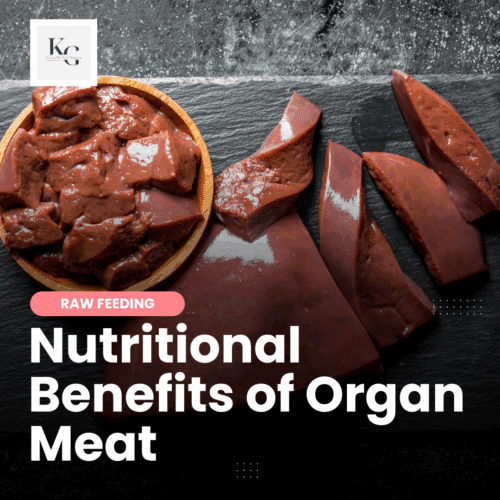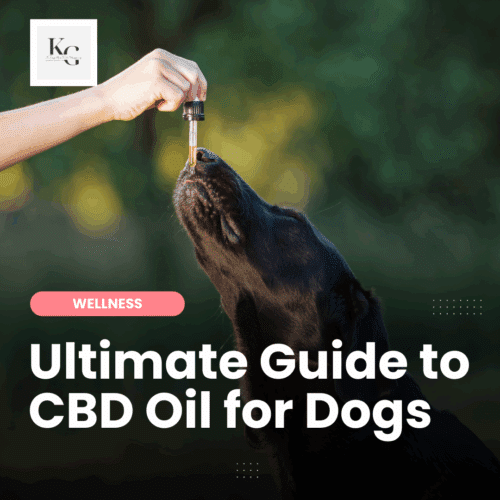Keep the Tail Wagging is supported by pet parents. I occasionally earn a commission (at no additional cost to you) when you click through an affiliate link to one of my favorite products. Thank you for your support. Read More
In 2013, we adopted a puppy – Blue – and he was an amazing addition to our family. He was a healthy dog and I often wonder how raw feeding would have impacted his health over the years. We lost him too soon and the only health issue he suffered from prior to crossing the rainbow bridge was puppy pyoderma. When he was diagnosed, the veterinarian prescribed several weeks of topical antibiotics. Today, I wonder if I could have cured the infection naturally.
What is Puppy Pyoderma?
Puppy Pyoderma (Pyo = Pus, Derma = Skin) is a skin infection caused by Staphylococcus Intermedius that typically occurs on hairless parts (like the lower tummy). Our puppy was diagnosed with puppy acne gone wrong. He had huge bumps and welts on his belly. We couldn't figure out what it could be (fleas, bee stings, ant bites?), and we took him to the veterinarian when it didn't clear up in a couple of days. The vet called it puppy acne (because it looks like a human teen's acne breakout) and told me it had blossomed into a staph infection and prescribed several weeks of antibiotics.
When I came home to research “puppy acne” and “staph infections,” I immediately clicked off the Internet because there was a lot of scary information. A veterinarian at the ASPCA helped me understand what was going on…
Facts About Puppy Pyoderma
- Staph resides all around us, but this doesn't mean we're minutes away from contracting the flesh-eating virus.
- Puppy Pyoderma isn't fatal and is usually treated with oral medications.
- Typically, it's not transferable from dog to dog – our other dogs didn't develop any skin conditions.
- It's not a dangerous staph infection; this isn't the same as the MRSA bacteria. Note: labeling MRSA as a virus is incorrect. We see MRSA labeled as a bacteria in the media, but it's a bacteria.
How Does a Puppy Contract Puppy Pyoderma?
We think our puppy developed this infection because Blue would crawl over the fence to greet us when we came home. We wonder if a scratch from the fencing material led to the staph infection.
What are the Symptoms of Puppy Pyoderma?
Blue experienced itchiness and a red rash that looked like pimples. Other symptoms include:
- itchiness
- pustules
- crusted skin
- small/raised welts
- loss of hair
- dried discharge in affected areas
The infection can occur on the superficial layers of the dog's skin, and if there's a deep wound, it can occur in the deep layers (deep pyoderma).
How was the Puppy Pyoderma Diagnosed?
Our veterinarian examined Blue and diagnosed him on the spot. He saw this condition regularly in puppies and was prescribed several weeks of antibiotics, stressing the importance of completing the prescription. It's tempting to stop the antibiotics when the rash clears up, however, if the staph infection remains, the pyoderma will return and it'll be worse.
6 Things We Learned About Puppy Pyoderma
1 – Puppy pyoderma can appear mild. Blue wasn't bothered by the rash on his tummy. He didn't lick the area and his behavior and personality didn't change.
2 – Puppy pyoderma isn't contagious. The pyoderma didn't spread to our other dogs; however, we washed our hands regularly to be safe.
3 – We have to complete the prescription. We learned that puppy pyoderma clears up within a day or so, but this doesn't signify that the staph infection is gone. If pet parents don't complete the prescription as instructed, the puppy pyoderma will return, possibly worse than before.
4 – Aloe vera can provide relief. We used a topical aloe vera gel to cool our puppy's skin. Although it didn't bother him, we wanted to ensure it remained this way. If I experience this again, I will spray a DIY anti-itch spray a few times daily on the area (recipe below).
5 – Puppy pyoderma is challenging to treat at home. Some websites promise a home or natural remedy for puppy pyoderma, but there's no guarantee that these would work. Coconut oil is a natural anti-fungal, anti-bacterial, and anti-viral. If I discovered this skin condition on a dog, I would treat the area with coconut oil to slow the progression, then contact the veterinarian. I'm not a fan of antibiotics; I'm also not a fan of allowing my dog to suffer.
Another home treatment involves apple cider vinegar (recipe below). I would still contact the veterinarian and follow their lead.
6 – The cost of treating puppy pyoderma is reasonable. When Blue was treated for puppy pyoderma, the cost was about $60 for the exam and prescription. Unfortunately, I didn't complete the first round of antibiotics, stopping when the rash cleared. In the end, we paid over $200 to treat this condition.
DIY Anti-Itch Spray
I love this anti-itch spray and have used it regularly on my dogs to relieve itchy paws, tummies, ears, and rear ends. The above video inspired the recipe…
Anti-Itch Spray Ingredients:
- 2 cups of brewed green tea
- 3-4 tablespoons of Braggs apple cider vinegar
- 10-15 drops of lavender essential oil
Add ingredients to a small spray bottle and shake before each use. Whenever one of my dogs has itchy skin, I spray the area a few times daily, following up with coconut oil or Soothe salve by CBD Dog Health. This method recently cleared a skin condition in one of my dogs. As a bonus, the treatment was approved by our integrative veterinarian.
Final Thoughts on Puppy Pyoderma
While I advocate for DIY and naturally treating our dogs, working with a veterinarian is essential. My veterinarian sees many things daily and can often diagnose my dogs on the spot. I would rather trust my dog's care to her knowledge and experience than my Googe search. Taking advantage of their education and experience can help reduce the possibility of something minor becoming a crisis. So, while I'm sure there are natural remedies to puppy pyoderma, I believe running those remedies by a trusted veterinarian is important.

















No, I don’t have pictures. I recommend contacting your veterinarian with questions to avoid a misdiagnosis.
Do you have an picture examples of what this looks like? I just noticed something on my pups stomach that looks like a pimple.
Hmmmm. My vet recommended a shampoo. Supposed to use 3 x a week and keep on his belly for 5 minutes (which is near impossible with a 13 week old puppy) She did not say anything about antibiotics. Has anyone cured this with a medicated shampoo?
Our puppy had this and it went away by itself.
Pyoderma is rotten. I’ve learned that we really have to use the antibiotics as the vet suggests and when it’s cleared up, I add Milk Thistle to our dogs diet for a good detox.
Wow Such a Great Post, I am going to Share this with my of one friend Jack, his puppy is facing Pyoderma from last 15-20 days, he did all the therapy but not getting success but now I think he’ll get Solution for his Beautiful Puppy.
Thanks for the thought. Our dogs get an hour of exercise daily – more on the weekends. And although our dogs have struggled with health issues, I wouldn’t consider them sickly and I believe they are eating a tremendous diet. It’s exciting to be able to explore their nutrition and I love knowing that we have healthy dogs. We work closely with a holistic veterinarian and nutritionist, so I’m confidence that our diet choice is ideal.
Rodrigo’s GI issues were due to a beef and chicken intolerance brought about by a food he tried this past fall.
I’m not sure what you mean by “single protein raw meals.” For the most part, our dogs do eat a single protein raw meal – this week, duck is on the menu. They also eat a diet based on the BARF model, because I think that it’s superior to Prey for our dogs.
Thanks so much for taking the time to share your thoughts – one thing I do appreciate about the raw feeding community is the willingness of others to share their experience. I do take it all in.
I love this blog. Keep up the good work, it’s quite clear that you love your dogs.
I must say though- your dogs seem to have a ton of issues! Rashes, inflorescence, IBS, bouts of sickness etc. Perhaps you should break everything down to the basics, stop with the supplements, and multi protein meals and let their bodies do the work. Simple, single protein raw meals.
Exercise is also a major component to immune health, you seem to have several large breed dogs. They should probably be getting a good hour of moderate to heavy activity a day.
Anywhoo, just a thought.
Much lovexo
Thanks, Nicole – I’ve updated the site with the clarification.
As a quick note – Staph (and as such MRSA) is not a virus, it’s a bacteria! So flesh eating bacteria and MRSA bacteria are the correct ways to describe what you did above. If either were viruses antibiotics wouldn’t help, they only fight bacteria (same reason colds aren’t cured with antibiotics). Thanks for the info!
Fantastic, thanks so much, Sarah
Wow – I am going to have to share this post w/ a friend. They are dealing with many of these symptoms in their pup!
It was new to us too. One dosage of antibiotics ought to work it out.
I hadn’t heard of this until we adopted Laika from the shelter; when we took her for her first vet visit she was diagnosed with it. From what I remember it was pretty inexpensive to treat and it cleared up fast. It’s good information because it’s not a commonly discussed condition (as far as I know) that puppy owners should be aware of.